The days are getting colder and shorter, and the mushrooms are popping everywhere. From the wild-looking lion’s mane to the robust king boletes, fall mushroom foraging in the Midwest promises a diverse array of edible wild mushrooms waiting to be discovered. It may mean putting on some extra layers and going out earlier in the day, but it’s usually well worth the effort. The best time to hit the woods is a few days after a good rain; that is when mushrooms will be most abundant.
Fall mushroom foraging in the Midwest is dependent on the weather. In some fall seasons, it is dry, and there won’t be a whole lot out in the woods. Other years, there is so much rain you can’t go outside without tripping over a mushroom. The best way to handle it is to roll with the seasons and be sure to take advantage of the bumper years. Even in dry years, there are always mushrooms out there. Persistence and patience are paramount!
If I’m missing any Midwest fall mushrooms, please let me know in the comments! Also, check out the guides for Winter Mushroom Foraging in the Midwest, Spring Mushroom Foraging in the Midwest, and Summer Mushroom Foraging in the Midwest.

Jump to:
Top 14 Edible Fall Mushrooms In The Midwest
Lion’s Mane (Hericium erinaceus)
Lion’s mane mushrooms are easily recognizable by their unique, shaggy appearance. These fall mushrooms resemble a white, fluffy pom-pom or a lion’s mane, hence their name. They have long, cascading spines that can grow up to 2 inches in length. As they mature, their color may shift from white to yellowish.
Mushroom hunters can find lion’s mane growing on hardwood trees, particularly oak, beech, and maple. These edible fall mushrooms thrive in cool, damp environments and only show up in autumn. They often appear on dead or dying trees, fruiting in wounds of living trees, or growing from fallen logs.
There are actually three edible Hericium species in the Midwest: Bear’s Head, Coral Tooth, and Lion’s Mane. They look similar with all white bodies and cascading spines, but are shaped differently. All of them are edible and taste similar, though folks do report slight flavor differences between the species.
Lion’s mane is sought after for its delicate, seafood-like flavor. When cooked, it has a texture reminiscent of crab or lobster meat. This makes it an excellent vegetarian substitute in seafood dishes. To prepare, simply sauté or roast the mushroom. It’s best enjoyed when fresh and white, as yellowing indicates its past prime and might taste bitter. It is also a medicinal mushroom.


Chicken of the Woods (Laetiporus sulphureus)
Chicken of the Woods, also known as sulfur shelf, is a vibrant orange-yellow mushroom that grows on hardwood trees. This fall mushroom is a favorite among foragers because it is easy to identify and tastes delicious. Its bright color makes it easy to spot during fall foraging expeditions, and it’s a great starting mushroom for beginners.
Look for large, fan-shaped clusters with a bright orange to yellow upper surface. The edges are usually wavy and bright yellow. The underside has tiny pores instead of gills, a key identification characteristic. These edible fall mushrooms typically grow on oak trees but can also be found on other hardwoods.
To find Chicken of the Woods, focus on dead or dying hardwood trees. They usually fruit from late summer to early fall (sometimes, spring too). Choose young, tender specimens for the best flavor and texture when harvesting.
In the Midwest, there are several Chicken of the Woods species with slightly different coloring. All of them are edible, delicious, and prime finds.
- Laetiporus sulphureus – This is the classic bright orange and yellow chicken of the woods with yellow spores. It grows in dense clusters on hardwoods. It is most common on oak trees but will also fruit from poplar, willows, beech, locust, cherry, and pear.
- Laetiporus cincinnatus – Often, this chicken of the woods may look like it’s growing from the ground. But, it is actually growing from buried wood. This confuses a lot of people as it can often be found 5-6 feet away from a tree and looks completely terrestrial. But, it is attached to the tree roots beneath the soil. Because this chicken of the woods is usually growing from buried wood, it also forms a bit differently from other species. Instead of stacked overlapping shelves, this species grows as a rosette. It also is peachy orange instead of bright orange or yellow and has white spores. This one really sets itself apart from the other chickens of the woods! You can find it growing around oak trees.
- Laetiporus huroniensis – This chicken of the woods looks just like the classic L.sulphureus, except it grows on conifers instead of hardwoods. It has bright orange or yellow caps and yellow pores. Many people advise caution when eating chicken of the woods from conifers as it may be more likely to cause gastrointestinal distress. This may be true or from undercooked mushrooms. Don’t be afraid to try it; just start with small amounts to see if you’re sensitive.
Curious about growing chicken of the woods? Check out our how-to guide here.


Hen of the Woods (Grifola frondosa)
Hen of the Woods, also known as Maitake or “dancing mushroom” in Japanese, is a spectacular fall find. This edible fall mushroom grows in large, overlapping clusters resembling a fluffed hen, hence its name. The fronds are fan-shaped with wavy edges, ranging from tan to olive-gray in color. Underneath, you’ll find a white pore surface instead of gills. The flesh is white and firm, with a pleasant earthy aroma.
To find Maitake, look around the base of oak trees, particularly mature or old-growth trees. These wild mushrooms prefer hardwood forests and cool weather and can be found in the upper Midwest. They often grow in the same spot year after year.
Hen of the Woods have a meaty texture and rich flavor and are excellent grilled, sauteed, roasted, or turned into jerky.

Oyster Mushrooms (Pleurotus ostreatus)
Oyster mushrooms grow in shelf-like clusters on dead or dying hardwood trees, mainly beech and oak. These fall mushrooms have broad, fan-shaped caps ranging from white to grayish or tan. Their gills are white or cream-colored and run down the stem. Oyster mushrooms have a distinct anise-like smell when young, which is a key identification point.
These wild mushrooms thrive in cool, damp environments. They can be found year-round but are most abundant after rainfall when temperatures are mild. Oyster mushrooms prefer growing on decaying logs or stumps in low-lying areas near ponds or creeks, where humidity is naturally higher.
Oyster mushrooms are versatile in the kitchen. They can be sautéed, roasted, grilled, or added to stir-fries. Their delicate flavor and meaty texture are good in many recipes.

Hedgehog Mushrooms (Hydnum repandum)
Hedgehog mushrooms, also known as sweet tooth, have caps that range from pale peach to buff or pale orange. They are rounded but, with age, flatten out and develop wavy edges. The most distinctive feature is the spines or teeth under the cap instead of gills. Hedgehog mushrooms have firm, white flesh with a mild odor and a slightly peppery taste.
These fall mushrooms grow in mixed woodlands. They form mycorrhizal relationships with trees, including beech, birch, oak, and conifers. These wild mushrooms prefer cool, damp environments and often grow in rings or arcs around their host trees.
Hedgehog mushrooms are sought for their delicious, nutty flavor and firm texture. They’re versatile in the kitchen, excellent for sautéing, roasting, or adding to soups and stews. Their meaty texture makes them an excellent substitute for chanterelles in many recipes.

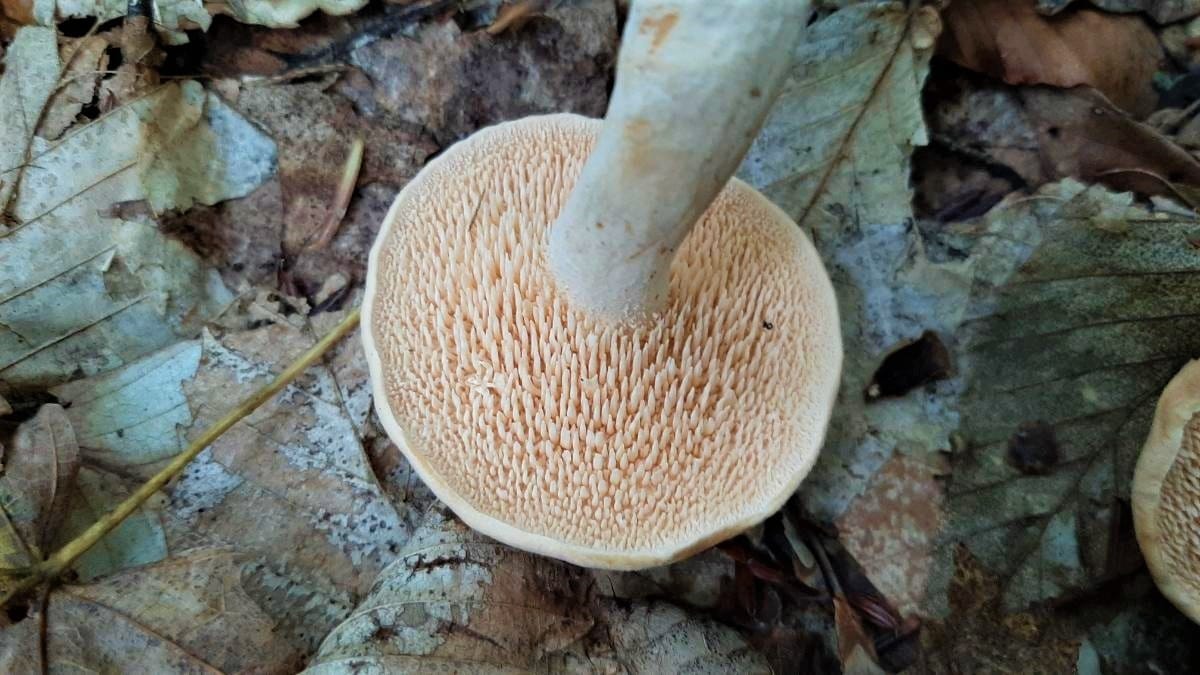
Shrimp of the Woods (Entoloma abortivum)
Shrimp of the Woods is a unique fall mushroom that resembles white popcorn balls emerging from the earth. These edible fall mushrooms appear as lumpy, rounded structures, typically 1-4 inches high, with a whitish surface that may discolor brownish. The interior might be white or pinkish and densely spongy.
Shrimp of the woods is actually the parasitized body of the edible honey mushroom. The Entoloma abortivum fungus attacks the honey mushrooms and turns them into these weird, golf-ball-sized white lumps. It’s not uncommon to see shrimp of the woods and honey mushrooms growing together; some are aborted, and others are still the actual honey mushrooms.
Look for Shrimp of the Woods in hardwood forests, particularly near elm trees. These wild mushrooms often grow in clusters on the ground, around decaying wood, or directly from tree bases. Look for firm specimens; old or soft specimens are usually gone by.
Despite the name, Shrimp of the Woods doesn’t taste like seafood. These fall mushrooms have a mild, nutty flavor with a unique texture reminiscent of shrimp. The best way to prepare them is to caramelize them, which brings out a sweet and savory profile. They absorb flavors well and are versatile wild mushrooms.

Honey Mushrooms (Armillaria mellea)
Honey mushrooms are fall mushrooms that grow in dense clusters on hardwood trees, stumps, and roots. Their caps range from honey-yellow to reddish-brown, with darker scales near the center. Young specimens have a pale yellow veil covering the gills, which later becomes a ring on the stem. The gills start off-white and darken with age. There is a species of honey mushroom called the ringless honey — it does not have the distinctive ring around the upper stem. This one is also abundant and edible.
These wild mushrooms thrive in deciduous forests, particularly around oak trees. They appear in large, rapid surges during fall, often infecting entire woodland areas. During strong honey mushroom years, you can gather bushels of these edible mushrooms! Honey mushrooms can grow from living, dying, or dead trees, as well as fallen branches and old stumps. Their parasitic nature allows them to spread through soil and be more abundant.
Select young honey mushrooms with pale gills for the best flavor and texture. Thoroughly cook them to avoid digestive issues; there are reports of these mushrooms causing gastrointestinal distress. Some foragers recommend boiling the caps before using them in recipes.

Lobster Mushrooms (Hypomyces lactifluorum)
Lobster mushrooms are a special find. These edible fall mushrooms are the result of a parasitic fungus (like the Entoloma abortivum, shrimp of the woods) that infects other mushroom species (Russula and Lactarius). The Hypomyces fungi take over the host and turn it into a completely different looking mushroom. Lobster mushrooms have a distinctive bright orange to red-orange color and a hard, rough exterior covered in tiny pimples. The interior flesh is white and firm, with a subtle seafood-like aroma. Their shape can be irregular and contorted, and their coloring resembles that of a cooked lobster’s shell.
Mushroom hunters can find lobster mushrooms in mixed woodlands, particularly near conifer trees. They often grow around oak, hemlock, and pine trees. In the Midwest, they thrive in forests with birch and aspen. The season for these wild mushrooms typically starts in late summer and extends through fall.
These fall mushrooms are highly valued for their culinary uses. They have a dense, meaty texture and a mild, nutty flavor with hints of seafood. When cooking lobster mushrooms, it’s best to keep it simple. Sautéing or pan-frying brings out their best qualities. They pair well with seafood dishes and can be used in pasta, soups, or roasted as a side dish. Their unique color adds visual appeal, too.

King Bolete (Boletus edulis)
King Bolete, also known as porcini, is one of the absolute best fall mushrooms. The cap is brown, thick, and rounded, resembling a bread roll. Its white or brown stalk is robust and solid, with a characteristic net-like pattern on the upper part. Look for King Boletes near spruce, pine, or oak trees. They thrive in cool, damp environments and often fruit after significant rainfall. King Boletes can be sautéed, roasted, or even grilled. Their rich, nutty flavor and meaty texture make them a real delicacy.
The caps of these mushrooms are rounded and range from 3-12 inches wide, with a smooth, dry surface that can be sticky when wet. The color varies from light tan to reddish-brown, often lighter near the edge. The underside of the cap has a sponge-like pore surface, which starts white in young specimens and turns yellow to greenish-brown as the mushroom matures. The stem is thick and solid, usually white or pale cream, with a distinctive white reticulation (net-like pattern) on the upper part. This reticulation is a key feature for their identification. They often grow in groups, so finding one may indicate the presence of others nearby.
King Boletes are valued for their rich, nutty flavor and meaty texture. When cooking king boletes, it’s best to keep it simple and appreciate their natural taste. Sautéing is a popular method: slice the mushrooms and cook them in butter or olive oil with garlic and herbs. They can also be roasted, grilled, or added to soups, stews, and risotto. Young, firm specimens are best for cooking, while older ones are better for drying.

Turkey Tail (Trametes versicolor)
Turkey Tail mushrooms have fan-shaped caps with multicolored bands. These wild mushrooms have a velvety texture and leathery feel. Their caps range from 1 to 4 inches wide with various shaded bands, including browns, grays, blues, and even purples. The underside is white with tiny pores, a key feature for this mushroom’s identification.
Turkey Tail grows on dead or decaying hardwood trees, stumps, and fallen logs. They are most often found on oak, maple, birch, and beech trees. These fall mushrooms are common from late summer through autumn, although they often persist year-round. The best time to collect them, though, is in the fall when they’re the freshest.
Turkey Tail mushrooms are popular for their potential health benefits. They contain antioxidants and compounds that may boost the immune system and support gut health. Some studies suggest they could aid in cancer treatment when used alongside conventional therapies. These mushrooms are not eaten due to their tough texture. Instead, turkey tail is brewed into a tea or taken as a supplement.

Giant Puffball (Calvatia gigantea)
Giant puffballs are impressive fall mushrooms that can grow up to 30 inches in diameter. Most aren’t that big, but they can get quite large! These edible fall mushrooms resemble large white soccer balls resting on the ground.
These large, white, rounded mushrooms lack the traditional cap, stem, or gills of other fungi. When sliced open, the interior should be completely white and marshmallow-like in texture. As they mature, the inside turns yellowish-green, which means they’re no longer edible. It’s crucial to cut puffballs in half vertically to ensure proper identification and avoid potentially dangerous lookalikes. Giant puffballs grow on the ground, never on trees or logs.
They appear in meadows, lawns, and grassy areas and often reappear in the same location annually. Giant puffballs have a mild, nutty flavor that absorbs other tastes well. They can be sliced, battered, fried, or used as a meat substitute in various dishes. A classic preparation involves slicing the mushroom, dipping it in beaten egg, coating with breadcrumbs, and frying until golden brown. For a creative twist, hollow out a puffball, fill it with other ingredients, wrap it in foil, and bake for a delicious stuffed mushroom dish.

Shaggy Mane (Coprinus comatus)
Shaggy Mane, also known as the lawyer’s wig, is recognizable by its cylindrical, white cap covered with shaggy scales. As it matures, the cap elongates and turns bell-shaped, gradually liquefying into black ink. This unique process, called deliquescence, aids in spore dispersal. The gills start white but quickly turn pink, then black. Shaggy Manes have a hollow, fragile stem and can grow up to 6 inches tall.
These edible fall mushrooms thrive in disturbed areas, often appearing in lawns, along roadsides, and in urban settings. They prefer rich, compacted soils and can even push through asphalt. Shaggy Manes typically fruit in groups during late summer and fall, sometimes reappearing in the same location for years. They often grow in vast scattered groupings — rarely is there just one. The hardest part is catching them before they start to decompose, which happens quickly.
Shaggy Manes are choice edibles, but timing is crucial when harvesting. They have a short shelf life and quickly turn inky after picking. Collect young specimens with tight, unexpanded caps for the best flavor and use them the same day. They can be sautéed, roasted, or used in soups.

Wood Blewit (Clitocybe nuda)
This stand-out purple mushrooms that can be found in deciduous and coniferous forests, as well as around compost and disturbed areas. They are deep purple to lilac when young but then fade to a rather bland tan as they age. Wood Blewits have a rich, earthy flavor and are often used in soups and stews.
These mushrooms have smooth, dome-shaped caps when they’re young, ranging in size from 2-6 inches in diameter. They are a beautiful purple-lilac when young but then fade to a tan or buff color as they mature. The gills underneath the cap are crowded and pale lilac to pinkish-brown. Wood blewits have a thick, sturdy stem that’s usually bulbous at the base and shares the cap’s purple color.
Wood Blewits have a sweet, orange-juice-like smell. They grow alone or in clusters on the forest floor. They’re usually found in leaf litter or in grassy areas near deciduous trees. It’s important to be very careful with Blewits because there are some toxic purple lookalikes.

Velvet Foot (Flammulina velutipes)
Velvet foot mushrooms, also known as enoki, have caramel to orange-colored caps that are sticky or slimy when wet. The caps grow out to 2.5 inches wide and are rounded when young. With age, they flatten out. Their most notable feature is the velvety stem, which darkens from the base upward, giving them their name. This is not a wild mushroom for beginner foragers. Velvet Foot has a very dangerous lookalike and should be foraged with caution.
These wild mushrooms thrive in cool to cold temperatures. They grow on dead or dying deciduous trees, particularly elm, oak, ash, and willow. Look for them from late autumn through early spring, as they’ll even push through snow during warm spells in winter.
Remove the tough, fibrous stems when preparing velvet foot mushrooms, and use just the caps. They can be sautéed, roasted, or added to soups. Their sweet, meaty flavor works well in casseroles and winter stews.
You may recognize the name enoki as the tall, skinny white mushrooms found in the grocery store. These are actually the same mushroom! The cultivated enoki is grown in tall bottles with minimal sunlight and forms entirely different bodies than their wild cousins.

Mushroom Foraging Resources
If you’re new to mushroom foraging, here are some great guides to get started: How To Be A Successful Mushroom Forager, Mushroom Foraging 101, and Mushroom Identification Pictures and Examples.
This guide to the best identification books by region will help you find the best guides for you.
Curious about spring foraging in other areas? Check out our guides for across the US.
- Fall Mushroom Foraging in the Pacific Northwest
- Fall Mushroom Foraging in the Southeast
- Fall Mushroom Foraging in New England
- Fall Mushroom Foraging in Southwest
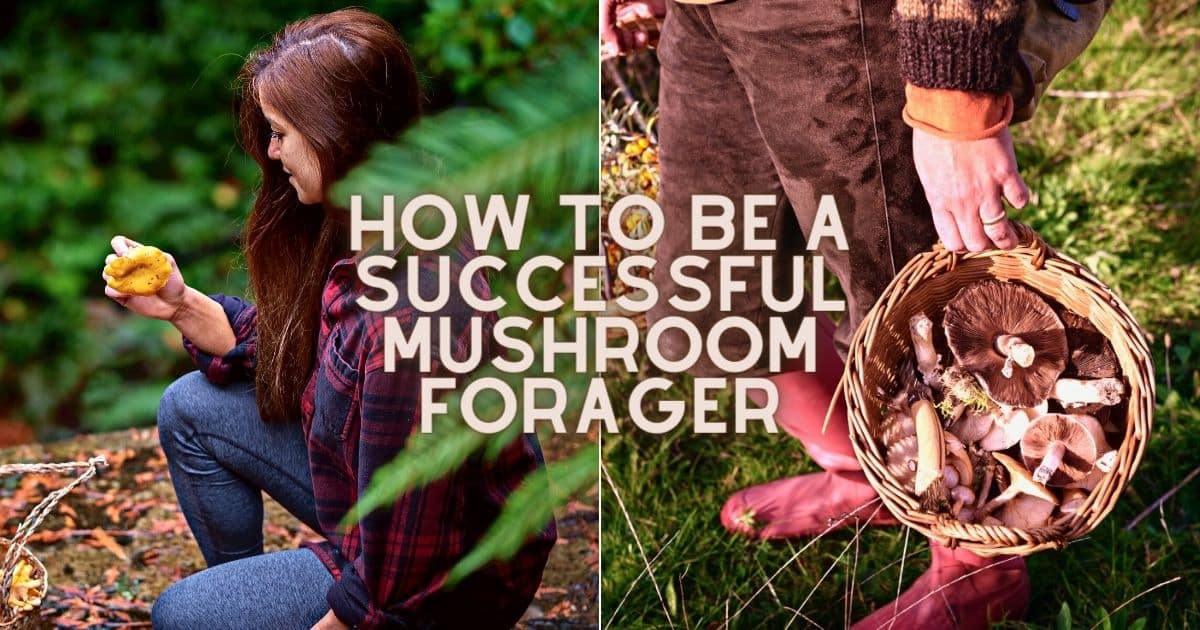
Common Question About Mushroom Foraging
When is the ideal time to go mushroom foraging?
Autumn is the best time for mushroom foraging in most places. It offers the best conditions for a wide variety of species. However, edible wild mushrooms grow throughout the year, so don’t limit your foraging to fall.





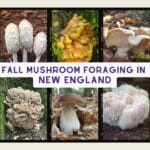

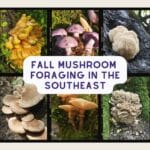
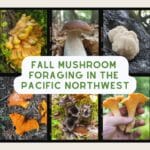
Leave a Reply